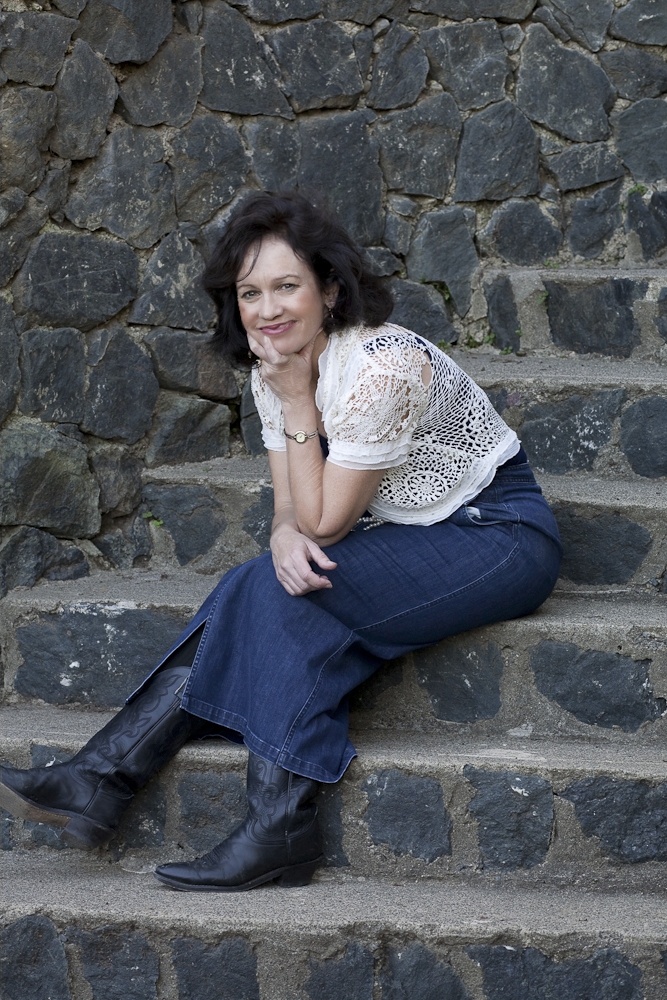Choldenko, Gennifer
Getting to Know Gennifer Choldenko
Gennifer Choldenko isn’t one of those authors who always knew they wanted to write for young people. “I didn’t want to find out that my calling was to write for children. And when I did figure it out, I was terrified. My father wanted to be a published writer his whole life. And though he had an extremely successful career in business, one of his biggest regrets was not getting published. So I guess the real question for me is . . . how did you muster the courage to follow your heart? I think that happened because I just couldn’t stand not being myself any longer. It is exhausting and disheartening to pretend your way through life and I had had enough.”
Eventually, Gennifer studied illustration and design. She has written a number of picture books, such as Louder, Lili and Dad and the Dinosaur, but she hasn’t illustrated any of them. “I think my degree in Illustration has been helpful in lots of ways. But I don’t really like to spend serious time illustrating because it makes me achingly lonely. I spend all day writing and never even realize I’m alone. The second I start illustrating the loneliness is overwhelming.”
Venturing into the unknown is part of Gennifer’s writing process. She finds the adage “write what you know” has its limitations. “That has not worked for me. Even my first published novel: Notes from a Liar and Her Dog [realistic fiction] was not the least bit autobiographical . . . I do use my own experience in my books, but not so directly. I’m generally most passionate about lives other than mine because I get bored being myself.
I decided to create a male protagonist in the Al Capone books for a lot of reasons. One of them was I wanted to experience what it was like to be my brother. Not that Moose is completely my brother . . . but the relationship between Moose and Natalie is very like the relationship between my brother, Grey and my sister, Gina. . .”
Gennifer’s experience certainly makes its way into her work in the little sisters who crop up in her novels. “I am the youngest in my family of origin and the youngest of all my cousins. So my identity as the bratty younger sister was forged early. Because I had so many older siblings or “sibling-cousins” to relate to, I developed lots of different younger sister personalities . . . Often, I’ll have no plans for a younger sister in a book but then one will show up whether she is invited or not. Little sisters are unstoppable.”
While the younger sisters are important, middle-school-aged characters are often protagonists in her novels. “I am most comfortable at age 12 or 13. Maybe turning 14 is possible but it hasn’t happened yet. Adult and young adult lives have a way of settling. But at 12 or 13 almost overnight, your life changes in shocking and uncontrollable ways . . . It’s a very intriguing age to write about.”
Creating historical fiction provides a different opportunity to explore intriguing topics. “When I’m writing historical fiction I start with an intense interest bordering on obsession about some aspect of history. It’s almost like I come down with a fever about Alcatraz or Autism or rats for example . . . But always there are strange and quirky facts, which are way weirder than anything I could make up. For Chasing Secrets I researched a plague outbreak in San Francisco in 1900. Who could have guessed an early cure for the plague was you farted in a jar, closed it up really tightly and then every few hours you smelled it.”
Walking the line between humor and intensity also figures in Gennifer’s writing process. “My voice comes out part funny and part intense because that is the way I am. That said though, some stories lend themselves to more humor than others. One thing I’ve learned is the soul of the story is more important than any funny line. And though it’s painful to ax a line that makes me laugh, depth trumps humor. On the other hand, there are times in which humor creates depth. Humor can anchor a reader inside a character. Humor can also help us process difficult information. And even when something is hilariously funny, we can sometimes sense the pain under the surface.”
What can readers expect in the future? Fans of the Alcatraz novels will be pleased to discover there’s a fourth book in the series. Book Four has a complicated history; it came into being after Gennifer trashed her first attempt and started all over again – “a huge challenge.” The result was Al Capone Throws Me a Curve, and it features the ending she originally wanted for Book Three!
Writing a fantasy novel (No Passengers Beyond This Point) was a new experience for her. “I definitely want to write another fantasy novel for middle graders. But for me writing fantasy is not something I can plan any more than I can plan a sneeze. I can put myself in situations where I’m likely to sneeze . . . but I can’t make it happen.”
Lastly, her newest project – an illustrated novel called One Third Nerd – has her “spending a lot more time looking for opportunities for visual humor.” Illustrated novels, picture books, realistic fiction, fantasy, historical fiction . . . Fans of all sorts of writing should keep an eye on Gennifer Choldenko.
Click Here for titles available in the BTSB Bookstore from this author

